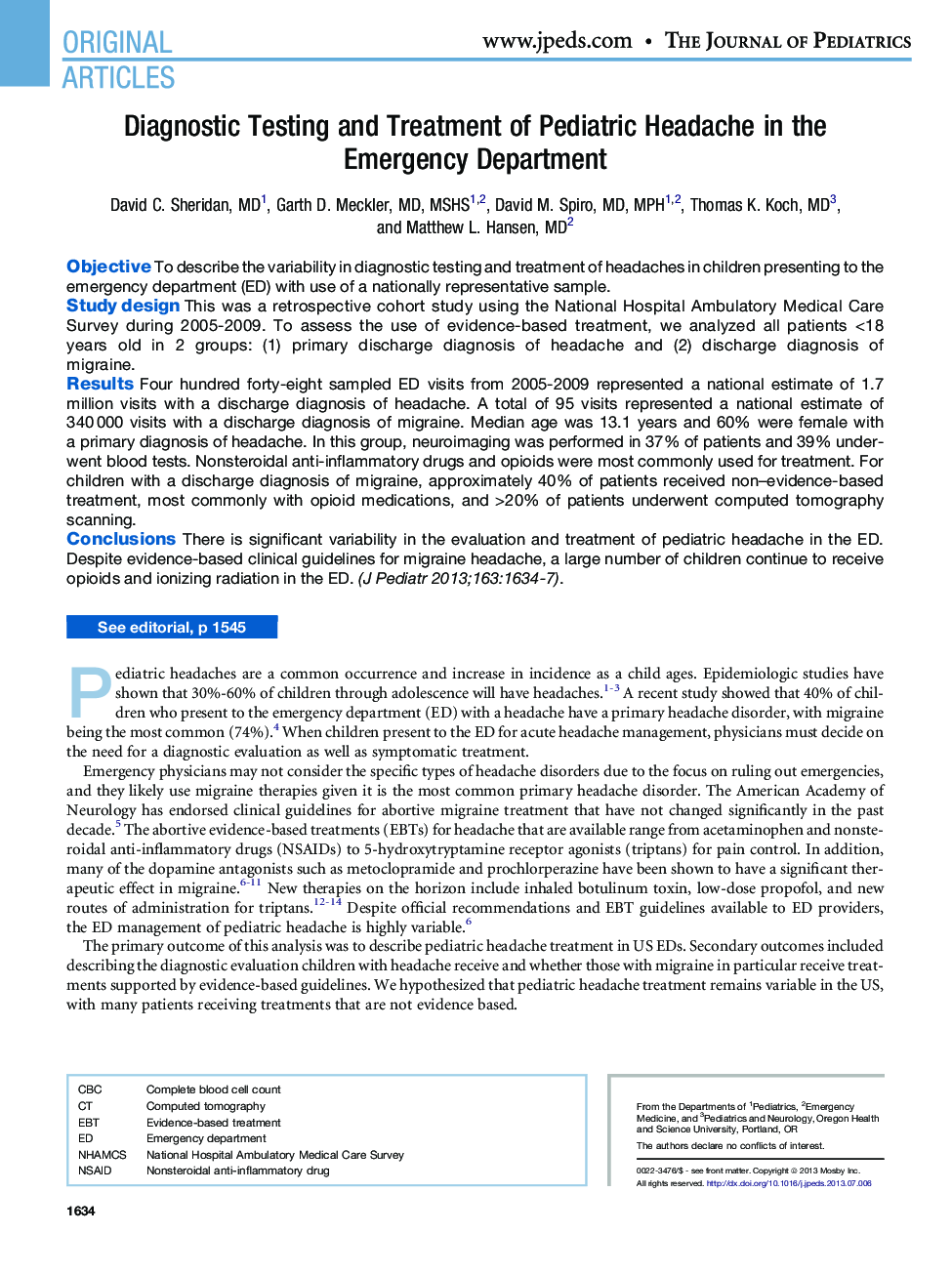| Article ID | Journal | Published Year | Pages | File Type |
|---|---|---|---|---|
| 6222902 | The Journal of Pediatrics | 2013 | 4 Pages |
ObjectiveTo describe the variability in diagnostic testing and treatment of headaches in children presenting to the emergency department (ED) with use of a nationally representative sample.Study designThis was a retrospective cohort study using the National Hospital Ambulatory Medical Care Survey during 2005-2009. To assess the use of evidence-based treatment, we analyzed all patients <18 years old in 2 groups: (1) primary discharge diagnosis of headache and (2) discharge diagnosis of migraine.ResultsFour hundred forty-eight sampled ED visits from 2005-2009 represented a national estimate of 1.7 million visits with a discharge diagnosis of headache. A total of 95 visits represented a national estimate of 340â000 visits with a discharge diagnosis of migraine. Median age was 13.1 years and 60% were female with a primary diagnosis of headache. In this group, neuroimaging was performed in 37% of patients and 39% underwent blood tests. Nonsteroidal anti-inflammatory drugs and opioids were most commonly used for treatment. For children with a discharge diagnosis of migraine, approximately 40% of patients received non-evidence-based treatment, most commonly with opioid medications, and >20% of patients underwent computed tomography scanning.ConclusionsThere is significant variability in the evaluation and treatment of pediatric headache in the ED. Despite evidence-based clinical guidelines for migraine headache, a large number of children continue to receive opioids and ionizing radiation in the ED.
